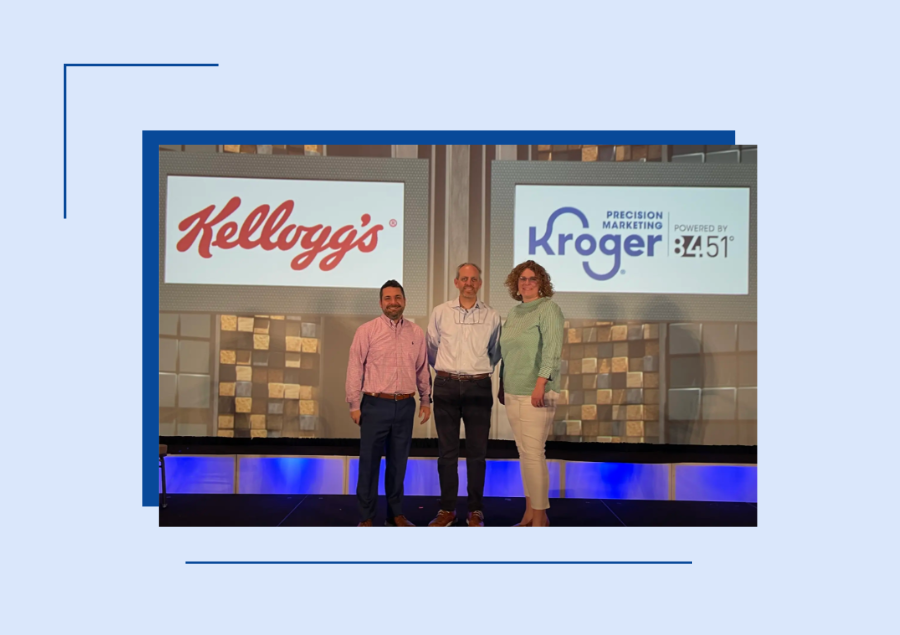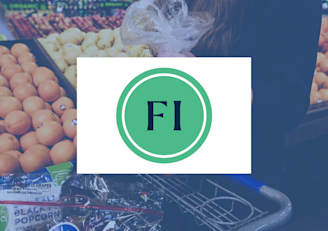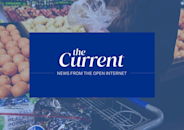
How Kellogg and Kroger are Connecting the Consumer Journey
For generations, the Kellogg Company has been inspiring shoppers with its beloved food brands. Today, shoppers have high expectations for brands and retailers – but gaps in the digital ecosystem can lead to a disconnected food purchase journey.
In their session at the ANA Masters of Data & Technology Conference, Kroger Precision Marketing’s Cara Pratt sat down with Kellogg Omni Commerce leaders Aaron Elleman and Justin Goodwin to discuss how Kroger and Kellogg are leaning in to changes in consumer behavior. They shared examples of how they're evaluating different activation opportunities and driving meaningful brand growth—all while creating moments of delight for consumers.
Adapting to changing consumer habits
Without a doubt, behaviors have changed over the last few years and expectations for brands and retailers are high—and appropriately so. People are living, working, and shopping differently.
“Demand for convenience, seamless commerce, personalization, and inspiration is high,” Pratt said.
But in traditional media, the path to seamless commerce can be rocky. Consumer identification, data privacy, cookie-deprecation, cross-media measurement, brand safety issues… the traditional media industry doesn’t make seamless commerce easy.
Creating the next chapter of media—together
In recent years, brands and retailers like Kellogg and Kroger have been working to forge a new path for media advertising.
“With today’s shoppers in mind, we created our retail media business – Kroger Precision Marketing – four years ago. Armed with first-party sales data across thousands of brands, retail media networks are delivering sophisticated targeting and powerful measurement to CPG advertisers,” Pratt said.
People typically think of retail media as ecommerce advertising—product listing ads influencing search. But sophisticated retail media platforms today are reaching consumers across their entire journey, from inspiration to shopping to purchase.
She pointed to the recently launched Kroger Private Marketplace—unleashing Kroger’s first-party audience data in the programmatic ad space—as an example of innovation.
“Kellogg has been an early adopter of this technology and a valuable partner as we seek to inspire families and make their weekly shopping routines a little easier,” Pratt said.
The overall flexibility of the Private Marketplace has enabled Kellogg’s agency partners and brand teams to directly tap into the platform. “They can build out audience targeting, set up measurement, etc.,” Goodwin said. “This is a place where we'll continue to partner and look to test and learn as we move forward.”
Today’s consumer journey
Shoppers are now moving so quickly into active shopping mode that “it's really more like a sprint” than a journey, Elleman said.
“It’s critical to understand where and when shoppers come in and out of that decision-making mindset. People want a fast, seamless path from inspiration to purchase. So, we identify those moments and intersect with the right message at the right time to change behavior.”
The pandemic has permanently changed the way people shop, with more than half the U.S. population projected make a digital grocery purchase in 2022. They expect that experience to be cohesive, regardless of which channel that they choose to shop in.
“At Kellogg, we're strategically engaging with shoppers across those points of inspiration, all the way through to conversion— what we call ‘no dead-end experiences,’” Goodwin said. By taking a holistic approach to omnichannel, you can serve consumers no matter how or where they prefer to shop.
How Kellogg uses retail media to solve business problems
For years, Kellogg has been at the forefront of using first-party data to influence brand messages, frequency and exposure. Access to Kroger’s 10 petabytes of data helps Kellogg connect the dots throughout the advertising funnel and solve business problems.
“We can come to KPM with really challenging problems, and you can come back and tell us, ‘The problem's not what you think, it's something completely different, and here's who you need to talk to,’” Elleman said. “We can leverage you as an insights partner, not just a media company.”
Goodwin shared a recent example of how KPM insights helped solve a business problem for Eggo. The frozen waffle and pancake brand had enjoyed a huge influx of new buyers during 2020. When faced with the challenge of retaining those households in 2021, “we worked with our partners at KPM to uncover the problem and come up with an action plan,” he said.
KPM developed pre-optimized audiences for Eggo, reaching current and lapsed brand households with targeted onsite ads, single subject emails and personalized digital coupons. The campaign saw strong results, exceeding benchmarks for ROAS, coupon downloads and redemptions.
“But most critically, we were able to go back to our brand team and talk about sales lift, increased household penetration, and use those learnings to inform our media decisions moving forward,” Goodwin said.
“The power of the connection between insights and activation is where the magic happens,” Pratt added. “That's where performance changes and you can get really prescriptive in driving activation and solving brand problems.”
Connecting messages across the digital ecosystem
Recently, Kellogg has been enhancing its omnichannel media approach to better engage with consumers. “Internally, we’re breaking down barriers and restructuring to create a team that crosses the traditional boundaries of competencies and budgets,” Elleman said. “It’s allowed us to break the old models and take a new approach, using retail data at the beginning of the planning process.”
Goodwin described how this shift led to Kellogg’s success with a gamer-focused campaign. “People spent 26 billion hours last year gaming, so it’s a big opportunity and a new eating occasion,” he said. The company developed a national promotional campaign to reach gamers with omnichannel touchpoints reaching into the physical and digital aisles. “We wanted to connect consumers who play video games and shop at Kroger (both in store and online), with the equity they know and recognize, in the games that they play, and with brands they consume while gaming.”
The initial campaign started in 2020 with awareness drivers such as offsite display and social ads. Media and targeted onsite ads drove to a brand shop page on Kroger.com, which was fully dedicated to this gaming activation.
“Gamers could learn about the national promotion, get a Kroger exclusive offer unique for that shopper, and shop from a curated list of participating Kellogg products,” Goodwin said. “We also had dedicated in-store displays, POS and custom signage, both in aisle and on point of sale, and even custom communication on packaging.”
The full-funnel campaign generated strong engagement with Kroger shoppers and brought in new households. As a result, Kellogg expanded the program in 2021, with plans for growth in 2022.
A unique moment for brands
“We’re still living through a time of massive disruption,” said Pratt. “New living, working and shopping habits are being formed.”
Marketers are recognizing this as a once-in-a-career opportunity to influence future shopping routines. Brands like Kellogg’s which connect touchpoints across the entire purchase journey will be best positioned to shape the buying decisions of tomorrow.
*This conversation was originally recorded on March 30, 2022, as part of the ANA Masters of Data & Technology Conference. Highlights are published here with permission from the ANA. *
Visit our knowledge hub
See what you can learn from our latest posts.




